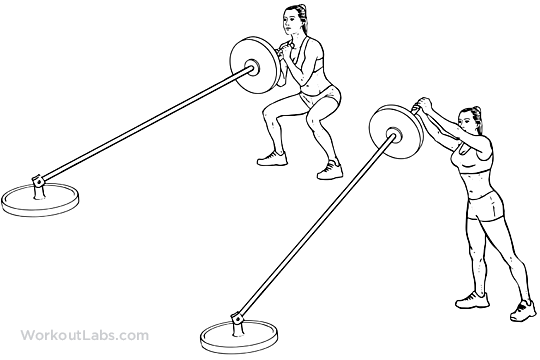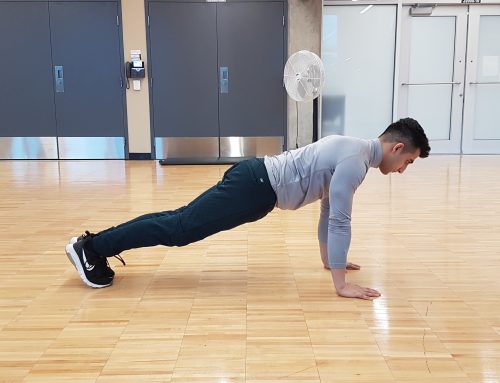A Landmine Thruster is a perfect exercise to build strength, improve conditioning and boost your metabolism. The Thruster is a compound movement that combines a Front Squat with a Push Press, making it a great exercise to hit the lower body muscles and upper body all in the same move. The more muscles used in an exercise, the more effective it is to burn calories and build strength.
A big benefit of using the landmine for this exercise over the tradional barbell or dummbells, is it presents less mobility challenges for the exerciser. The neutral grip on the bar is a lot easier on the wrists, and the angle of the pressing portion of the exercise is mujch more suitable for anyone who may have shoulder issues or tight lats (restricting the arms from going over head).
How to set up the Landmine Thruster:
- Assume a standing position with your spine neutral and feet in your normal squat stance.
- Shoulder the barbell in both hands in front of your chest.
- Once the barbell is in place, squat to parallel by simultaneously breaking at the knees and hips.
- Drive your feet into the floor and extend the knees and hips. Transfer your momentum into the bar press to lockout by extending the elbows and flexing the shoulders.
- Slowly lower the barbell back to the starting position in front of your chest and repeat for the desired number of repetitions.
Tips:
- Don’t allow the head to jut forward excessively.
- Drive the bicep to the ear and exhale as you press.
- Keeping the elbows slightly bent at the top and not locking out entirely will help to keep tension on the shoulders.
- Ensure the rib cage stays down and you’re not falling into excessive hyperextension.
- Toe angle is highly individual – experiment to see what feels best for you.
- Drive through the whole foot – you want 3 points of contact: big toe, little toe, and heel.
- Imagine you’re trying to drop your back pockets straight towards your heels.
- Some forward translation of the knees over the toes is alright provided that the knees don’t deviate excessively inward or outward. Those with longer femurs will have to allow their knees to come farther forward if they want to remain upright.
- Don’t push the knees out excessively but ensure they track roughly over or slightly outside the 2nd toe.
How to Program:
Want to work on strength? Do lower reps and heavier loads.
Power? Use moderate loads, low reps and lift explosively.
Conditioning and metabolism? Do more reps per set or lower rest between sets.




